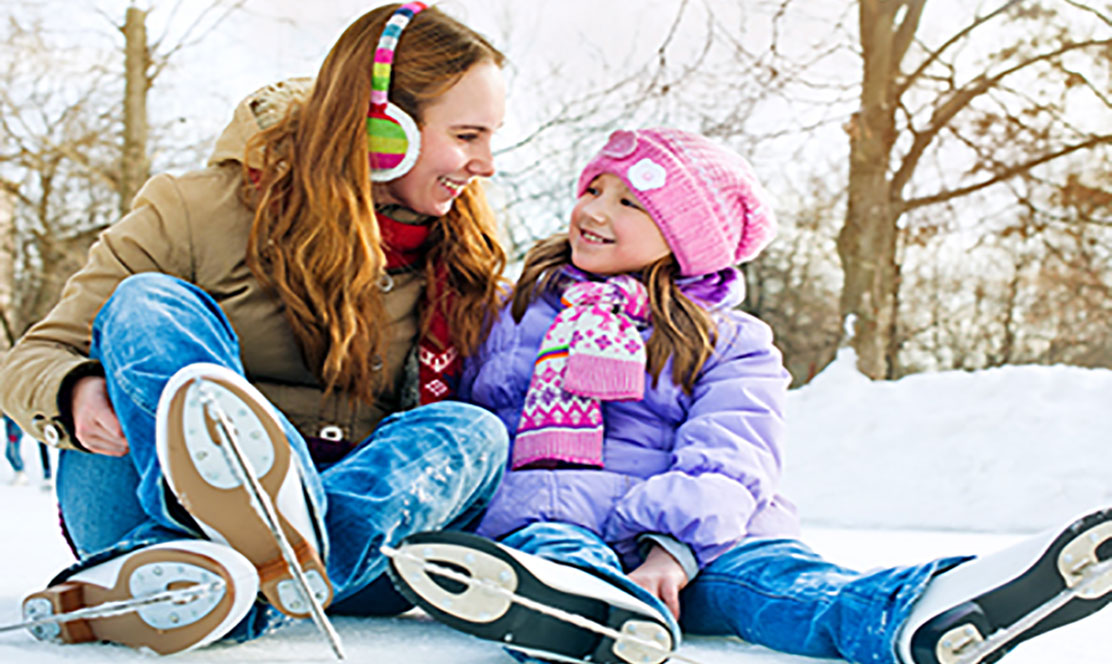Winter safety: Keeping your kids safe outdoors
GUEST BLOG - Alexandra Theodorakidis, Editorial Assistant at AboutKidsHealthWhen the temperature drops and the snow arrives, many families head outdoors to enjoy some winter sports and activities. But snow and freezing temperatures present their own set of dangers that kids and parents need to consider. AboutKidsHealth has a number of quick tips to keep you and your family safe this winter.

Bundle up
Participating in your favourite winter activities is a lot more fun for you and your children if everyone is warm and comfortable. Frostbite and hypothermia can set in quickly if you do not take the correct precautions.
This is why dressing in layers is so important. Wearing three layers of clothing keeps the body insulated, helps maintain circulation and allows you to easily remove clothes if your child is too hot.
Make sure your child has warm socks, waterproof and insulated gloves or mittens and temperature-rated, waterproof boots with a strong grip on the sole.
Also protect your child’s head, neck and face. The head and neck are major sources of heat loss, so a warm hat and scarf are important. Sunglasses can also help to cut the glare from light reflecting off snow and prevent snow blindness.
Dehydration
Many people think dehydration is a heat-related condition, but it can also occur quickly and easily in cold temperatures.
Make sure your child drinks plenty of warm liquids, which will keep them both hydrated and warm. Even if they say they are not thirsty, encourage them to drink water regularly while they play outside.
Sunscreen
Sun safety isn’t just for the summer! While many people do not think of applying sunscreen in the winter, it’s easy to get sunburn, especially while skiing or skating. This is because snow and ice reflect and intensify the sun’s rays.
Just like in the summer, make sure that any exposed skin is well protected. Choose a sunscreen that protects against both UVA and UVB rays, with an SPF of 30 or higher, and reapply it often.
Activities
To keep your child safe while doing winter sports and activities, make sure they are fully prepared and know to stay away from dangerous areas.
If you are going skating or will be anywhere near frozen ponds, rivers or lakes, make sure the ice is at least 15 cm (six inches) thick, or 20 cm (eight inches) thick if skating in a group. Clear blue ice is the strongest and safest ice; grey ice is unsafe. Beware of any ponds or lakes covered in snow. A blanket of snow over the ice can warm the surface and cause the ice to weaken.
If you want to take your child skiing or snowboarding, they should first take lessons from a certified instructor. Always have your child wear a helmet and make sure that all equipment is in good condition and fits properly.
Remember that children are more susceptible to cold than adults, so taking breaks to warm up is essential. Always listen to the weather forecast and make sure to dress your child accordingly. If, after following all these tips, the weather is still too harsh for outdoor activities, try to find some fun things to do indoors so your child can remain active even on the coldest days.
For more outdoor winter safety tips, visit AboutKidsHealth.
Participating in your favourite winter activities is a lot more fun for you and your children if everyone is warm and comfortable. Frostbite and hypothermia can set in quickly if you do not take the correct precautions.
This is why dressing in layers is so important. Wearing three layers of clothing keeps the body insulated, helps maintain circulation and allows you to easily remove clothes if your child is too hot.
Make sure your child has warm socks, waterproof and insulated gloves or mittens and temperature-rated, waterproof boots with a strong grip on the sole.
Also protect your child’s head, neck and face. The head and neck are major sources of heat loss, so a warm hat and scarf are important. Sunglasses can also help to cut the glare from light reflecting off snow and prevent snow blindness.
Dehydration
Many people think dehydration is a heat-related condition, but it can also occur quickly and easily in cold temperatures.
Make sure your child drinks plenty of warm liquids, which will keep them both hydrated and warm. Even if they say they are not thirsty, encourage them to drink water regularly while they play outside.
"The head and neck are major sources of heat loss, so a warm hat and scarf are important."
Sun safety isn’t just for the summer! While many people do not think of applying sunscreen in the winter, it’s easy to get sunburn, especially while skiing or skating. This is because snow and ice reflect and intensify the sun’s rays.
Just like in the summer, make sure that any exposed skin is well protected. Choose a sunscreen that protects against both UVA and UVB rays, with an SPF of 30 or higher, and reapply it often.
Activities
To keep your child safe while doing winter sports and activities, make sure they are fully prepared and know to stay away from dangerous areas.
If you are going skating or will be anywhere near frozen ponds, rivers or lakes, make sure the ice is at least 15 cm (six inches) thick, or 20 cm (eight inches) thick if skating in a group. Clear blue ice is the strongest and safest ice; grey ice is unsafe. Beware of any ponds or lakes covered in snow. A blanket of snow over the ice can warm the surface and cause the ice to weaken.
If you want to take your child skiing or snowboarding, they should first take lessons from a certified instructor. Always have your child wear a helmet and make sure that all equipment is in good condition and fits properly.
Remember that children are more susceptible to cold than adults, so taking breaks to warm up is essential. Always listen to the weather forecast and make sure to dress your child accordingly. If, after following all these tips, the weather is still too harsh for outdoor activities, try to find some fun things to do indoors so your child can remain active even on the coldest days.
For more outdoor winter safety tips, visit AboutKidsHealth.


